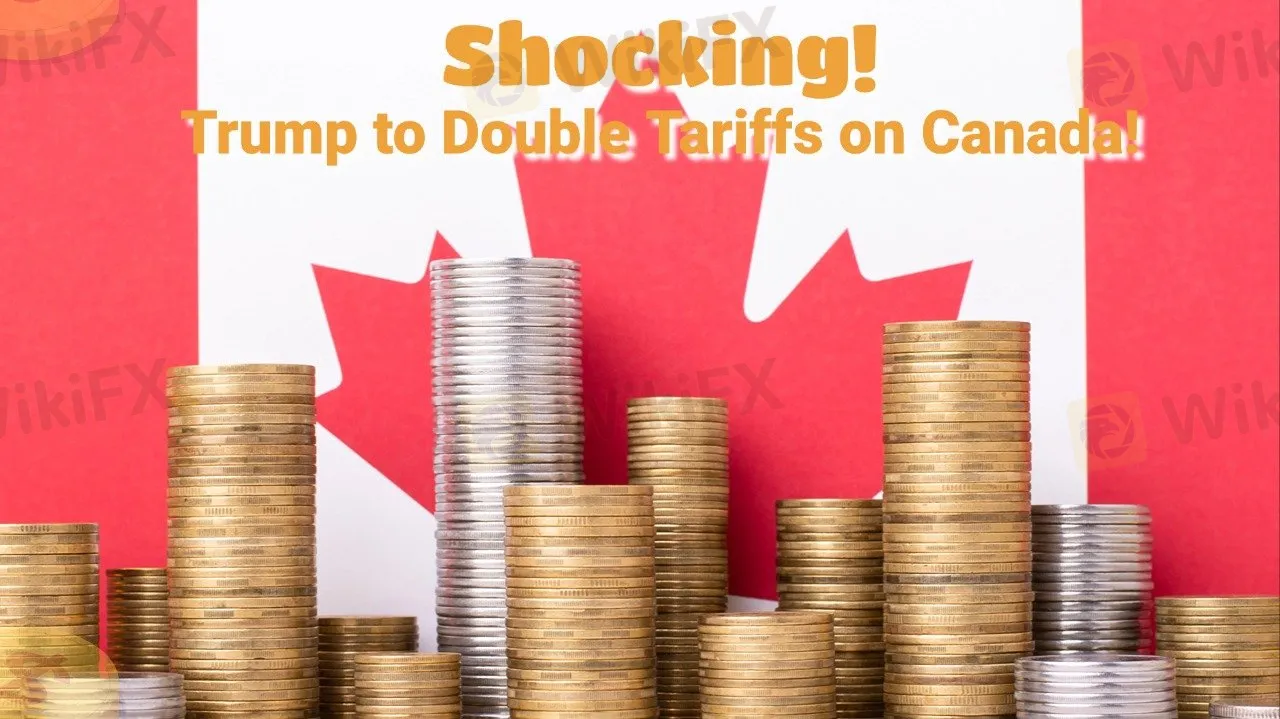简体中文
繁體中文
English
Pусский
日本語
ภาษาไทย
Tiếng Việt
Bahasa Indonesia
Español
हिन्दी
Filippiiniläinen
Français
Deutsch
Português
Türkçe
한국어
العربية
Shocking! Trump to Double Tariffs on Canada!
Abstract:Trump announced a tariff hike on Canadian steel and aluminum to 50%, shaking the markets. The Canadian stock market took a hit, the Canadian dollar plummeted, and U.S. steel and aluminum stocks surged, triggering strong reactions from all sides.

U.S. President Donald Trump recently declared an additional 25% tariff on Canadian steel and aluminum imports, bringing the total tariff rate to 50%.
This decision was made in response to Ontario‘s move to impose a 25% tax on electricity exports to the U.S. Trump stated that the tariff increase was a countermeasure against Canada’s trade policies and warned that if Canada did not withdraw its tariffs, the trade war could escalate further.
The announcement sent shockwaves through global markets. Both U.S. and Canadian stock markets fell, the Canadian dollar plunged, while U.S. steel and aluminum stocks surged. Later, Trump hinted at a possible concession on the tariff issue, briefly easing market concerns.
By 4 p.m. Eastern Time, the White House confirmed that the existing 25% tariffs on steel and aluminum would take effect at midnight, though no details were provided on the enforcement of the 50% tariff.
Canada responded firmly, refusing to yield to Trump‘s pressure and even threatening to cut off electricity supplies to the U.S. Former U.S. Treasury Secretary Larry Summers criticized the policy as “self-inflicted harm,” warning that it could worsen recession risks. Meanwhile, the UK government stated that it would not respond to Trump’s tariff threats but would continue seeking an exemption.
Overall, Trumps decision not only strained U.S.-Canada relations but also created economic and political uncertainty on a global scale.
Disclaimer:
The views in this article only represent the author's personal views, and do not constitute investment advice on this platform. This platform does not guarantee the accuracy, completeness and timeliness of the information in the article, and will not be liable for any loss caused by the use of or reliance on the information in the article.
Read more

HSBC announced a $1.1 billion charge linked to the largest Ponzi scheme in financial history
The British banking giant HSBC Holdings Plc has announced a potential $1.1 billion charge connected to the long-running Bernard Madoff Ponzi scheme, following a legal ruling in Luxembourg. The claim stems from Herald Fund, a European investment fund that sued HSBC over alleged losses related to the Madoff fraud.

BofA Securities pays more than $150K fine to settle its charge
BofA Securities, Inc. (BofAS) has agreed to pay a $155,000 fine and accept a censure from the Financial Industry Regulatory Authority (FINRA) after FINRA found multiple violations of market trading and supervisory rules.

SC Urges Malaysians To Stay Alert As Scam Complaints Double Since 2020
Malaysia’s Securities Commission warns that complaints about unlicensed investment activities have doubled in five years—3,602 cases in 2024 and 2,039 in H1 2025—highlighting increasingly sophisticated scams targeting even professionals and seniors. Schemes often mimic legitimacy, then block withdrawals via “compliance” or “maintenance” excuses. The core defense is pre-investment verification and ongoing risk control.

Warning: FinPros Finds New Excuses to Block Withdrawals
Recently, reports have surfaced online exposing yet another withdrawal scandal involving FinPros, a forex broker that claims to be regulated by the Cyprus Securities and Exchange Commission (CySEC). According to the report from the victim, FinPros froze her legitimate profit of USD 197, citing a bizarre reason: “suspected collusion with other violators during trading.”
WikiFX Broker
Latest News
Forex24 Faces CySEC Fine for Late Compliance Filing
One Wrong Move Wiped Out a Government Retiree’s Lifetime Savings
MH Markets Review 2025: Trading Platforms, Pros and Cons
Octa FX in Pakistan: The Complete Guide to Local Payments, Regulation, and Support
Mekness Review: Traders Report Alleged Fund Scams & Account Blocks
INTERPOL, AFRIPOL Crack Down on Africa Terror Finance
Forex Scam Checker Philippines: Verify Brokers with WikiFX
"Our Business Has Died": Texas Services Sector Sentiment Slumps Further In October
D Prime to Exit Limassol Office Amid Doo Group Restructure
How to Protect Your Account Security? Three Methods to Reduce Phishing Risks
Currency Calculator



